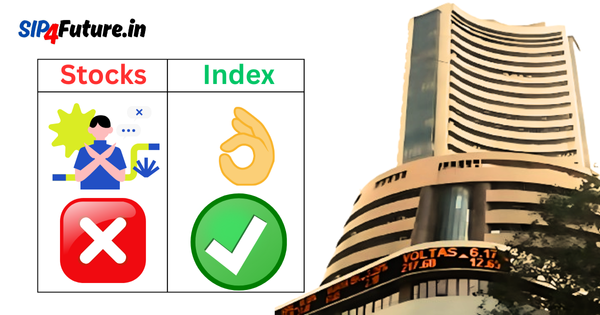Bhansali Engineering Polymers Ltd (BEPL), a key player in India’s specialized thermoplastics sector, recently released its Q4 and full-year results for FY 2024-25, revealing a mixed performance that has drawn attention from investors and analysts alike. With a 7.38% revenue increase in Q4 to ₹344.94 crore but a 5.08% dip in net profit to ₹39.20 crore, the company’s quarterly figures reflect both resilience and challenges. However, the full-year performance paints a more optimistic picture, with revenue up 14.41% to ₹1,397.74 crore and net profit soaring 31.14% to ₹179.40 crore. This article dives deep into BEPL’s financials, market dynamics, and future prospects, focusing on the primary keyword Bhansali Engineering while weaving in secondary keywords like Q4 results, revenue growth, net profit, and dividend.
What Drives Bhansali Engineering’s Q4 Performance?
Bhansali Engineering, listed on the National Stock Exchange (NSE) under the ticker BEPL, has carved a niche in producing high-performance engineering thermoplastics like Acrylonitrile Butadiene Styrene (ABS) and Styrene Acrylonitrile (SAN). These materials are critical in industries such as automotive, electronics, and consumer durables, where demand for lightweight, durable components is rising. In Q4 FY 2024-25, the company reported a revenue of ₹344.94 crore, a 7.38% increase from the previous year’s corresponding quarter. This growth reflects BEPL’s ability to capitalize on steady demand despite volatile market conditions.
However, the quarter wasn’t without hurdles. Net profit fell 5.08% to ₹39.20 crore, primarily due to rising raw material costs and competitive pricing pressures. Management highlighted that fluctuations in petrochemical-based raw material prices, a key input for ABS and SAN, squeezed margins. Despite this, BEPL’s focus on operational efficiency and product innovation helped mitigate some of these challenges, ensuring revenue growth remained robust.
| Q4 FY 2024-25 Metrics | Amount (₹ Crore) | Change (% YoY) |
|---|---|---|
| Revenue | 344.94 | +7.38% |
| Net Profit | 39.20 | -5.08% |
How Does Bhansali Engineering’s Full-Year Performance Stack Up?
While Q4 presented challenges, Bhansali Engineering’s full-year results for FY 2024-25 are a testament to its strategic resilience. The company achieved a 14.41% increase in revenue to ₹1,397.74 crore, driven by strong demand for its specialized thermoplastics across domestic and international markets. Net profit for the year surged 31.14% to ₹179.40 crore, reflecting improved operational efficiencies and a favorable product mix.
The company’s ability to boost profitability over the year underscores its strong market positioning. According to data from Moneycontrol, BEPL’s focus on high-margin products and cost optimization played a pivotal role. Additionally, export markets contributed significantly, with growing demand from Asia and Europe for BEPL’s ABS and SAN products.
| FY 2024-25 Metrics | Amount (₹ Crore) | Change (% YoY) |
|---|---|---|
| Revenue | 1,397.74 | +14.41% |
| Net Profit | 179.40 | +31.14% |
When Did Bhansali Engineering Declare Its Dividend?
A highlight for shareholders was Bhansali Engineering’s dividend announcement. On April 25, 2025, the company declared a final dividend of ₹1 per share, bringing the total dividend for FY 2024-25 to ₹4 per share, or 400% of the face value. This move signals confidence in the company’s cash flow and long-term growth prospects, despite the Q4 profit dip.
The dividend payout aligns with BEPL’s shareholder-friendly approach, as noted on the Bombay Stock Exchange (BSE). For investors, this consistent dividend policy enhances BEPL’s appeal, particularly in a sector where reinvestment needs often limit payouts. The final dividend is subject to shareholder approval at the upcoming Annual General Meeting (AGM), with payment expected within 30 days of approval.
What Challenges Impacted Bhansali Engineering’s Q4 Profits?
The 5.08% decline in Q4 net profit to ₹39.20 crore was a focal point in BEPL’s results. Management attributed this to two primary factors: escalating raw material costs and market pressures. The thermoplastics industry relies heavily on petrochemical derivatives, and global supply chain disruptions in 2024-25, including geopolitical tensions affecting oil prices, drove up input costs. Data from the Ministry of Commerce and Industry, Government of India indicates that petrochemical imports faced price volatility, directly impacting companies like BEPL.
Additionally, competitive pricing in the domestic market posed challenges. With new entrants and established players vying for market share, BEPL faced pressure to maintain competitive pricing, which squeezed margins. However, the company’s diversified product portfolio and strong brand reputation, as highlighted on its official website Bhansali Engineering, helped it retain customer loyalty.
How Is Bhansali Engineering Positioned for Future Growth?
Despite short-term challenges, Bhansali Engineering remains optimistic about its long-term prospects. The global engineering thermoplastics market is projected to grow steadily, driven by demand in automotive (for lightweight components), electronics (for durable casings), and consumer goods. BEPL’s investment in research and development (R&D) positions it to innovate and meet evolving industry needs, such as eco-friendly and recyclable thermoplastics.
The company’s manufacturing facilities in Gujarat and Maharashtra, equipped with advanced technology, provide a competitive edge. BEPL’s focus on sustainability, including efforts to reduce energy consumption in production, aligns with global trends and regulatory pushes, as outlined by the Ministry of Environment, Forest and Climate Change. These initiatives could enhance BEPL’s appeal to environmentally conscious clients and investors.
Moreover, BEPL’s export growth is a key driver. With a presence in over 20 countries, the company is well-positioned to tap into emerging markets where infrastructure and automotive sectors are expanding. Analysts on platforms like Moneycontrol suggest that BEPL’s strategic focus on exports could offset domestic market volatility.
What Are the Risks for Bhansali Engineering Investors?
Investing in Bhansali Engineering comes with inherent risks, particularly given the cyclical nature of the petrochemicals sector. Key risks include:
- Raw Material Price Volatility: Fluctuations in global oil and petrochemical prices can erode margins, as seen in Q4.
- Currency Fluctuations: As an exporter, BEPL is exposed to forex risks, which could impact profitability.
- Regulatory Changes: Stricter environmental regulations could increase compliance costs, as noted in reports from the Central Pollution Control Board.
- Competition: Intensifying competition from domestic and international players may pressure pricing and market share.
Investors should weigh these risks against BEPL’s strong fundamentals, including its robust revenue growth and consistent dividend payouts. Monitoring global commodity trends and BEPL’s cost management strategies will be crucial for assessing its future performance.
How Does Bhansali Engineering Compare to Industry Peers?
To contextualize BEPL’s performance, it’s worth comparing it to peers like Supreme Petrochem Ltd and INEOS Styrolution India Ltd, both players in the thermoplastics and petrochemicals space. While Supreme Petrochem reported steady revenue growth in FY 2024-25, its profit margins were similarly impacted by raw material costs, according to BSE filings. INEOS Styrolution, on the other hand, faced challenges in export markets but maintained stable domestic sales.
BEPL’s 31.14% net profit growth for FY 2024-25 outpaces many peers, reflecting its operational efficiency and diversified revenue streams. However, its Q4 profit dip highlights vulnerabilities shared across the sector. The company’s ability to navigate these challenges while sustaining dividend payouts sets it apart as a balanced investment option.
| Company | FY 2024-25 Revenue Growth | FY 2024-25 Net Profit Growth |
|---|---|---|
| Bhansali Engineering | 14.41% | 31.14% |
| Supreme Petrochem | ~12% | ~20% |
| INEOS Styrolution India | ~10% | ~15% |
Note: Peer data is indicative based on market reports and may vary.
What’s the Market Sentiment Around Bhansali Engineering?
On April 25, 2025, BEPL’s stock closed at ₹110.68 on the NSE, down 4.32% for the day, reflecting market reactions to the Q4 profit dip. Despite this, the stock has shown resilience over the year, supported by strong full-year results and the dividend announcement. Analysts maintain a Neutral view, citing short-term headwinds but long-term potential.
Platforms like NSE and Moneycontrol report steady investor interest in BEPL, driven by its leadership in the niche thermoplastics market. Sentiment is buoyed by the company’s export growth and R&D investments, though caution persists due to raw material cost concerns.
When Should Investors Consider Bhansali Engineering?
For investors, timing is key. Bhansali Engineering’s strong full-year performance and consistent dividends make it an attractive option for those seeking exposure to the thermoplastics sector. However, the Q4 profit dip and ongoing raw material cost pressures suggest a cautious approach. Investors may consider accumulating shares during price dips, particularly if global petrochemical prices stabilize.
Long-term investors could benefit from BEPL’s growth in export markets and its focus on sustainable production. Keeping an eye on quarterly results and global commodity trends will help in making informed decisions. The upcoming AGM, where the final dividend will be approved, could also influence stock sentiment.
Conclusion: A Balanced Outlook for Bhansali Engineering
Bhansali Engineering Polymers Ltd has delivered a mixed yet promising performance in FY 2024-25. While Q4 results showed revenue growth tempered by a profit dip, the full-year figures highlight robust growth and profitability. The company’s dividend policy, export focus, and R&D investments position it well for future opportunities, though risks like raw material costs and competition warrant vigilance.
For investors, BEPL offers a blend of stability and growth potential in the dynamic thermoplastics market. By staying attuned to market trends and company developments, stakeholders can navigate the challenges and capitalize on Bhansali Engineering’s long-term prospects.




